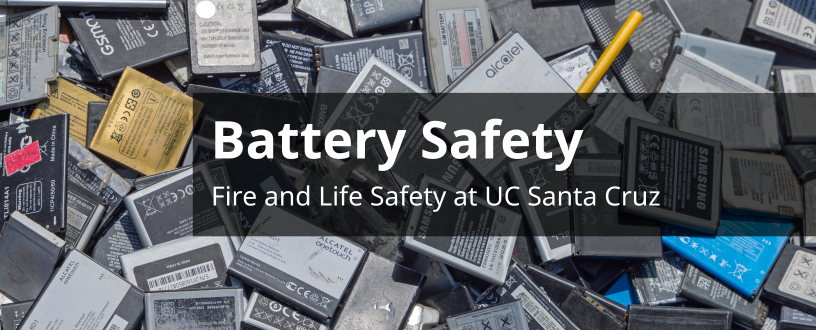Lithium Ion Battery Safety

Lithium-ion rechargeable batteries are commonly used in home electronics such as phones, laptop computers, tablets, e-scooters, and other devices requiring plug-in charging. These batteries are small and powerful, but when used incorrectly or damaged, they can overheat, catch fire, or explode. Fire agencies across California continue to respond to fires caused by lithium-ion batteries.
Safety Tips
- Purchase and use devices that are listed by a qualified testing laboratory.
- Always follow the manufacturer’s instructions.
- Only use the battery that is designed for the device.
- Put batteries in the device the right way.
- Only use the charging cord that came with the device.
- Do not charge a device under your pillow, on your bed, or on a couch.
- Do not keep charging the device or device battery after it is fully charged.
- Plug directly into a wall electrical outlet for charging.
- Keep batteries at room temperature and away from heat or direct sunlight. Do not charge them at temperatures below 32°F (0°C) or above 105°F (40°C).
- Store batteries away from anything that can catch fire.
- Do not charge a device while sleeping.
- Do not charge a device near your primary exit.
E-Vehicles
Fires in electric vehicles powered by high-voltage lithium-ion batteries pose the risk of electric shock from exposure to the high-voltage components of a damaged lithium-ion battery. A further risk is that damaged cells in the battery can experience uncontrolled increases in temperature and pressure (thermal runaway), which can lead to hazards such as battery ignition/fire and reignition/fire after the initial fire appears to be suppressed. The risks of electric shock and battery reignition/fire arise from the "stranded" energy that remains in a damaged battery. Charge your battery in a flat, dry area away from children, direct sunlight, liquids, tripping hazards, and in a location where the e-bike is not at risk of falling.Signs of a Problem
Stop using the battery if you notice these problems: odor, change in color, too much heat, change in shape, leaking, or odd noises. If it is safe to do so, move the device away from anything that can catch fire. Call 9-1-1.Battery Disposal
Never put lithium-ion batteries in the trash and do not discard batteries in piles.. Recycling is always the best option. Take the batteries to a battery recycling location or contact EH&S at hazwaste@ucsc.edu or call 459-2553 for disposal instructions. In the event of fire from thermal runaway, always dial 9-1-1. For more information on recycling, please visit EH&S Battery DisposalAdditional Resources
OSFM Information Bulletin 24-001NFPA Lithium Ion Battery Safety
